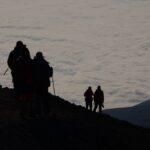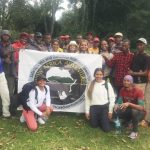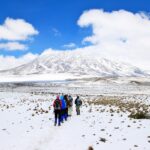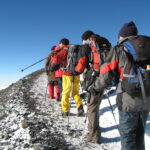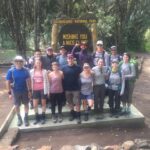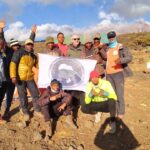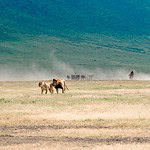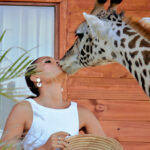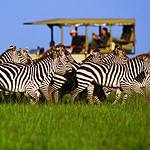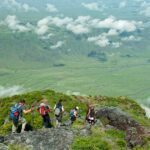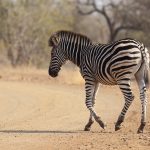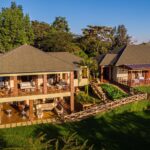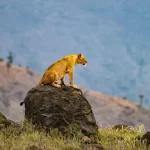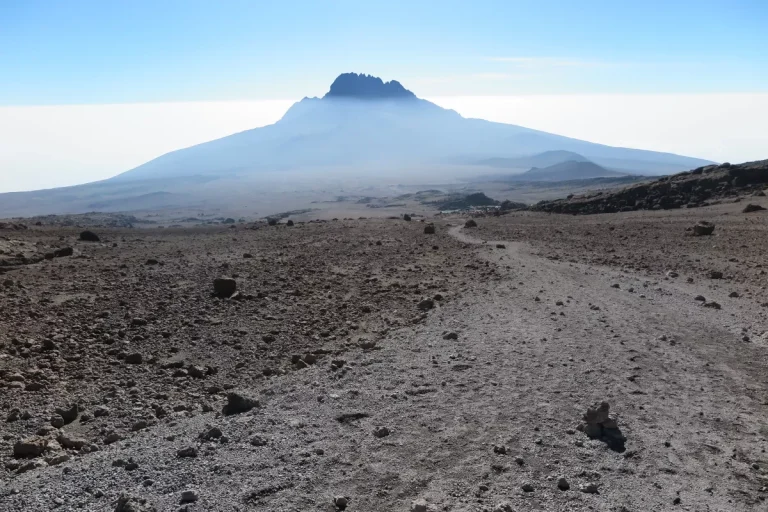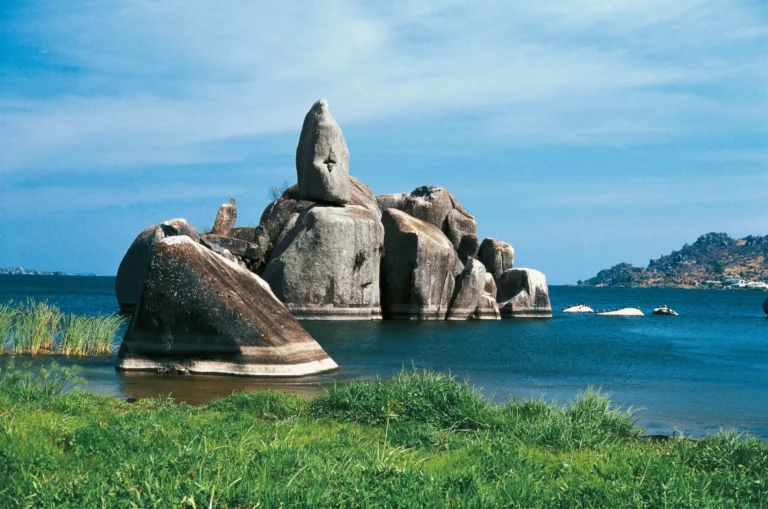Table of Contents
Mount Kilimanjaro vs Everest: Which Mountain is Right for You?
The ultimate guide to choosing between Africa’s highest peak and the world’s tallest mountain comparing difficulty, cost, scenery, preparation, and personal challenge comes down to the debate of Mt Kilimanjaro vs Everest. Many adventurers wonder whether to attempt the accessible yet demanding Kilimanjaro or the legendary, formidable Everest.
When discussing Mt Kilimanjaro vs Everest, the differences in altitude, climbing style, and technical requirements become clear. Kilimanjaro is a trekking peak requiring no technical climbing, while Everest demands advanced mountaineering skills.
Travelers often weigh Mt Kilimanjaro vs Everest in terms of cost and logistics as well. Kilimanjaro is more affordable and faster to climb, while Everest requires months of preparation and a much higher budget.
Scenery also plays a huge role in the Mt Kilimanjaro vs Everest decision. Kilimanjaro offers diverse landscapes from rainforest to glaciers while Everest showcases the dramatic Himalayan peaks.
Ultimately, the Mt Kilimanjaro vs Everest choice depends on your goals: a life-changing high-altitude trek or the ultimate mountaineering challenge.
Kilimanjaro vs Everest: At a Glance
| Feature | Mount Kilimanjaro | Mount Everest |
|---|---|---|
| Height | 5,895m (19,341 ft) | 8,848m (29,029 ft) |
| Location | Tanzania, Africa | Nepal/Tibet, Himalayas |
| Climbing Difficulty | Moderate to Challenging (Non-technical) | Extremely Challenging (Technical) |
| Technical Skills | Basic hiking, no ropes or ice axes needed | Advanced mountaineering, crampons, ropes |
| Average Cost | $2,000 – $5,000+ | $30,000 – $100,000+ |
| Duration | 5–9 days | 6–10 weeks |
| Best For | Beginners, scenic trekkers, budget climbs | Elite climbers, bucket-list adventurers |
| Permit Required? | Yes (Tanzania National Parks) | Yes (Nepal/Tibet + Liaison Officer) |
| Success Rate | ~65–85% (route & acclimatization) | ~30–60% (season & team) |
Difficulty Comparison: Kilimanjaro vs Everest
Mount Kilimanjaro: The Accessible Giant
No technical climbing required — it’s a high-altitude trek.
Focus is on endurance, acclimatization, and mental grit.
Routes like Machame, Lemosho, and Rongai offer varied difficulty and scenery.
Altitude sickness is the #1 reason climbers fail — proper pacing is key.
“Kilimanjaro is an endurance test. It’s the perfect first high-altitude climb.”
— Sarah K., Summitted Both Peaks
Mount Everest: The Ultimate Test
Requires advanced mountaineering skills: fixed ropes, ice axes, crampons, glacier travel.
Climbers must have prior 7,000m+ experience (e.g., Denali, Aconcagua).
Extreme cold, high winds, low oxygen — mental toughness is as vital as physical strength.
The “Death Zone” (above 8,000m) poses severe risks.
“Everest isn’t just a climb — it’s a two-month expedition testing every limit you have.”
— Tenzing S., Everest Summit Guide
Cost Breakdown: Kilimanjaro vs Everest
Kilimanjaro Budget: $2,000 – $5,000+
Includes:
Park fees & permits
Certified guides & porters
Meals & accommodations on the mountain
Group gear (tents, mess tents)
Airport transfers & pre/post-climb lodging (varies)
Pro Tip: Avoid ultra-cheap operators — safety and ethical porter treatment matter.
Everest Budget: $30,000 – $100,000+
Includes:
Permit ($11,000+ from Nepal)
Western guide or Sherpa team
Oxygen systems & high-altitude gear
Base camp logistics, food, tents
Helicopter evacuation insurance
Pre-climb training peaks (optional)
“The cost difference is staggering — but so is the experience. Everest is an investment in a lifetime achievement.”
— Tenzing S.
Scenery & Experience: Kilimanjaro vs Everest
Kilimanjaro: Walk Through 5 Climate Zones
Rainforest → Moorland → Alpine Desert → Arctic Summit
Sunrise from Uhuru Peak is legendary — glaciers glowing pink over the African plains.
Wildlife sightings possible on lower slopes (colobus monkeys, exotic birds).
Everest: The Roof of the World
Trek through Sherpa villages, Buddhist monasteries, prayer flags.
Views of Lhotse, Nuptse, Ama Dablam.
Khumbu Icefall, Western Cwm, Hillary Step — iconic and intimidating.
Summit view: 360° panorama of the highest peaks on Earth.
“Kilimanjaro’s ecosystems are a marvel. Everest’s scale? Nothing compares.”
— Mark Z., Kilimanjaro Summiter
Real Climber Testimonials
“Kilimanjaro was my warm-up. Everest? That’s where I found out what I’m truly made of.”
— Rachel T., Summitted Both
“I loved Kilimanjaro’s diversity. Everest? It’s not ‘fun’ — it’s raw, brutal, and utterly unforgettable.”
— David L., Everest Summiter
How to Choose: Kilimanjaro or Everest?
Ask yourself:
Are you a beginner? → Start with Kilimanjaro.
Do you have high-altitude experience? → Everest may be within reach.
Budget under $10K? → Kilimanjaro.
Seeking a spiritual/cultural journey? → Everest Base Camp Trek (non-summit) is incredible.
Want to summit the highest point on Earth? → Everest — but train for 1–2 years.
Short on time? → Kilimanjaro = 5–9 days. Everest = 6–10 weeks.
Time Commitment & Logistics
| Factor | Kilimanjaro | Everest |
|---|---|---|
| Climb Duration | 5–9 days | 6–10 weeks |
| Travel to Trail | Fly to Kilimanjaro (JRO) → 1hr drive | Fly to Kathmandu → 10-day trek to Base Camp |
| Best Seasons | Jan–Mar, Jun–Oct | Pre-Monsoon (Apr–May), Post-Monsoon (Sept–Oct) |
| Success Factors | Acclimatization, pacing, hydration | Experience, team, weather window, oxygen use |
Climate & Conditions
Kilimanjaro: Equatorial mountain — can experience rain, sun, and snow in one day. Summit temps: -10°C to -20°C.
Everest: Extreme cold, hurricane-force winds, low oxygen. Summit temps: -30°C to -60°C. Weather windows are narrow and critical.
BONUS: The Ultimate Kilimanjaro Packing List
Clothing: Layer Smart
Base Layer: Merino wool tops & bottoms (x3)
Mid Layer: Fleece jacket, lightweight down
Outer Layer: Waterproof, windproof jacket & pants
Footwear: Broken-in waterproof hiking boots + 5x wool socks
Accessories: Beanie, balaclava, gloves (liner + insulated), buff, sunglasses (UV400)
Essential Gear
Sleeping bag (-20°C rating)
Headlamp + extra batteries
Water bottles (3L) + purification tablets
Trekking poles
Duffel bag (≤15kg for porters) + daypack (20–30L)
Health & Safety
Diamox (consult doctor)
Blister kit, painkillers, rehydration salts
First aid kit + personal meds
Travel insurance with high-altitude rescue
Documents & Misc
Passport + Tanzanian visa
Vaccination records
Power bank, camera, book, journal, cash for tips
Pro Packing Tip: Use compression sacks + dry bags. Roll clothes. Label everything.
FAQ: Kilimanjaro vs Everest
Can a beginner climb Kilimanjaro?
Yes — no technical skills needed, but fitness and acclimatization are vital.
Can you climb Everest without experience?
No — requires prior 7,000m+ climbs and technical training.
Which is more dangerous?
Everest — avalanches, weather, and the “Death Zone.” Kilimanjaro’s main risk is altitude sickness.
Which offers better views?
Subjective — Kilimanjaro = ecosystems + African sunrise. Everest = Himalayan grandeur.
Can I climb both?
Yes — many climbers use Kilimanjaro as training for Everest.
Kilimanjaro vs Everest — Which Should YOU Climb?
Choose Kilimanjaro if you want:
A challenging but achievable high-altitude trek
Stunning ecological diversity
Lower cost and shorter time commitment
Your first major mountain conquest
Choose Everest if you want:
The ultimate mountaineering challenge
To stand on the highest point on Earth
A multi-week expedition testing your limits
The prestige (and price tag) to match
Ready to Climb?
Whether you’re lacing up for Kilimanjaro’s rainforests or training for Everest’s Death Zone — your mountain is waiting.
Kilimanjaro calls the brave. Everest calls the prepared. Which will you answer?
Bookmark this guide. Share it with fellow climbers. And when you summit — tag us in your photo from the top of Africa… or the top of the world.
The Ultimate Kilimanjaro Packing List: Don’t Forget These Essentials
Standing at 5,895 meters (19,341 feet) above sea level, Mount Kilimanjaro is a formidable adventure that demands meticulous preparation. As you embark on this African odyssey, a well-crafted packing list is your first line of defense against the unpredictable Tanzanian highlands. Here’s a comprehensive guide to ensure you’re equipped with the essentials, from the comforts of clothing to the necessities of gear and personal items.
I. Clothing: Layering for Success
| Layer | Description | Recommended Items |
|---|---|---|
| Base Layer | Moisture-wicking for warmer days | 2-3 Tops, 2 Bottoms (Merino Wool or Synthetic) |
| Mid-Layer | Insulating for cooler evenings | 1-2 Fleeces or Lightweight Insulators |
| Outer Layer | Waterproof & Windproof for extreme weather | 1 Waterproof Jacket, 1 Pair Waterproof Pants |
| Footwear | Sturdy, Waterproof Hiking Boots with Ankle Support | 1 Pair, plus Extra Socks |
| Accessories | Hats, Gloves, Scarves for temperature fluctuations | 1 Set each, adjustable for various conditions |
II. Gear: Your Mountain Allies
| Category | Essential Gear | Optional but Recommended |
|---|---|---|
| Sleeping | Sleeping Bag (-20°C/-4°F Rated), Sleeping Pad | Portable Camping Pillow |
| Lighting | Headlamp, Extra Batteries | Red Light Mode Headlamp for Night Vision |
| Hydration | Water Bottles or Hydration Bladder, Water Purification Tablets/Filter | Collapsible Water Container |
| First Aid | Basic First Aid Kit, Altitude Sickness Medication | Personal Medications, Blister Care |
III. Personal Items: Comforts & Necessities
| Item | Description |
|---|---|
| Travel Documents | Passport, Visa, Travel Insurance |
| Toiletries | Biodegradable Soap, Toothbrush, Wet Wipes, Hand Sanitizer |
| Electronics | Smartphone, Portable Charger, Camera, Power Bank |
| Miscellaneous | Snacks, Reading Material, Map, Guidebook, Emergency Whistle |
Packing Tips for the Savvy Climber
- Pack Light, Pack Smart: Aim for a maximum of 15kg (33lbs) to ensure porters can safely transport your luggage.
- Efficient Layering: Roll clothing to save space and reduce wrinkles.
- Gear Protection: Use waterproof bags or dry sacks for electronic and sensitive gear.
- Personal Hygiene: Regularly wash hands and maintain personal cleanliness to prevent the spread of illnesses.
Embarking on Your Kilimanjaro Adventure
With this ultimate packing list, you’re well-prepared to tackle the challenges and marvels of Mount Kilimanjaro. Remember, flexibility is key; be prepared for variable weather conditions and potential gear adjustments. Safe ascent, and may the Roof of Africa reveal its breathtaking beauty to you.

